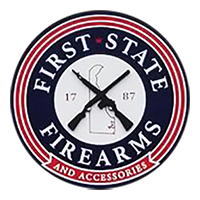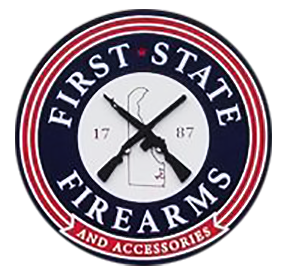Share
There are four basic and straightforward rules for firearm safety. As a gun owner, you have an obligation and commitment to know these rules and abide by them. By practicing safe behaviors, injuries, accidents, or theft can be prevented.
Here are the four basic rules of firearm safety:
1. Assume Every Gun Is Loaded
As a responsible firearm owner, always assume that every gun is loaded. Inspect the gun - even if it is unloaded - to ensure it to be clear before further handling it. Taking the necessary time to inspect a firearm can prevent any mishandling and ensure that there are no accidental discharges. If someone hands you a gun you are unfamiliar with, take the time to check and ensure that it is unloaded. There is also nothing wrong with asking for a quick demonstration of the safe and proper usage of a firearm before handling it
2. Never Point the Muzzle of a Gun at Anything You Don’t Want to Destroy
Being aware of your surroundings is one of the essential aspects of firearm safety. Before moving or making contact with a firearm, think about your environment and surroundings. Determine safe directions that you can point your firearm in, and always keep it pointed in that direction. If you find yourself at a gun range, whether indoor or outdoor, do not be afraid of asking for a safe direction if you are unsure. A responsible gun owner will always keep their firearms pointed in a safe direction, no matter the situation. While cleaning, loading, reloading, shooting, or even laying your firearm down, always have it pointed in a safe direction.
3. Keep Your Finger Off the Trigger Until You Are Ready to Fire
Always strive to keep your "trigger finger" off of the trigger until it is time to fire a gun. Proper trigger discipline is a great skill to learn and is very important in maintaining a safe firearm. Even when holding a firearm, ensure that your finger is kept at a straight position and rested alongside the firearm's frame, not inside the trigger guard. Your finger must not go anywhere on the trigger during any action, such as carrying, picking up, loading, reloading, unloading, or setting your firearm down. Only when the time is right, and you are ready to shoot the gun, should you place your finger on the trigger and pull it.
4. Always Be Sure of Your Target and What Lies Beyond It
As mentioned, a firearm owner should always be aware of their surroundings before shooting. You are responsible for everything around you when shooting, including the areas around and behind your target. Think about the size of your target and the angle at which you intend to shoot it. If a bullet goes through a target, where will it go? What might it hit? Most ranges will have some sort of bullet-safe berm, trap, or safety zone behind the targets. If a target does not have something like this behind it, do not take the shot. Always consider the possibility of your bullets straying, ricocheting, or over penetrating unintended objects.
Additional Safety Tips
In addition to the four primary rules of firearm safety, here are some additional safety measures when handling and using a firearm:
- Take a gun safety class, especially as a first-time gun owner: This is a great gift to give yourself or a new, inexperienced gun owner.
- Store guns and ammunition safely and securely: The aim of gun storage is always to prevent unauthorized persons from being able to access your firearms, especially in situations of theft or curious children.
- Regularly service your firearm: Like any mechanical device, a firearm is subject to wear over time. Bringing your gun in to an expert for inspection, cleaning, and adjustment will prolong its lifespan and decrease the chances of malfunctions. Check with the manufacturer of your firearm for recommended service intervals.
- Always wear eye and ear protection when shooting or cleaning a firearm: Hearing can be damaged by the shooting noise of firearms — which are, after all, controlled explosions. Protective eyewear helps shield your eyes from forest debris, falling shot, clay target chips, and a possible firearm malfunction. Additionally, wearing eye protection when disassembling and cleaning any gun will also help prevent the possibility of any gun components, such as springs, solvents, and other agents, from contacting your eyes.
- Take a first aid class and have a well-stocked first aid emergency kit: Like gun classes, knowing first aid plays a critical role in gun ownership safety. Medical training as a gun owner can save a life. Accidents happen, and not being prepared can have catastrophic consequences. A first aid kit should include a tourniquet, bandages, gauze, a nasopharyngeal airway tube, nitrile gloves, surgical tape, a face shield, and trauma shears.
You Are the Key to Firearm Safety
From learning how to properly use and shoot your firearm to following all of the basic firearm safety rules, owning a gun is a serious responsibility. Before heading to the shooting range, take the time to review these recommended rules from First State Firearms, and always strive to follow them.
Need Help with Your Gun Safety Needs?
First State Firearms and Accessories is fully equipped to help you take an active role in gun safety and accident prevention. We have everything from gun safety classes to gun services to gun safes to help keep you, your loved ones, and your firearms safe. Let one of our experts help you today!


